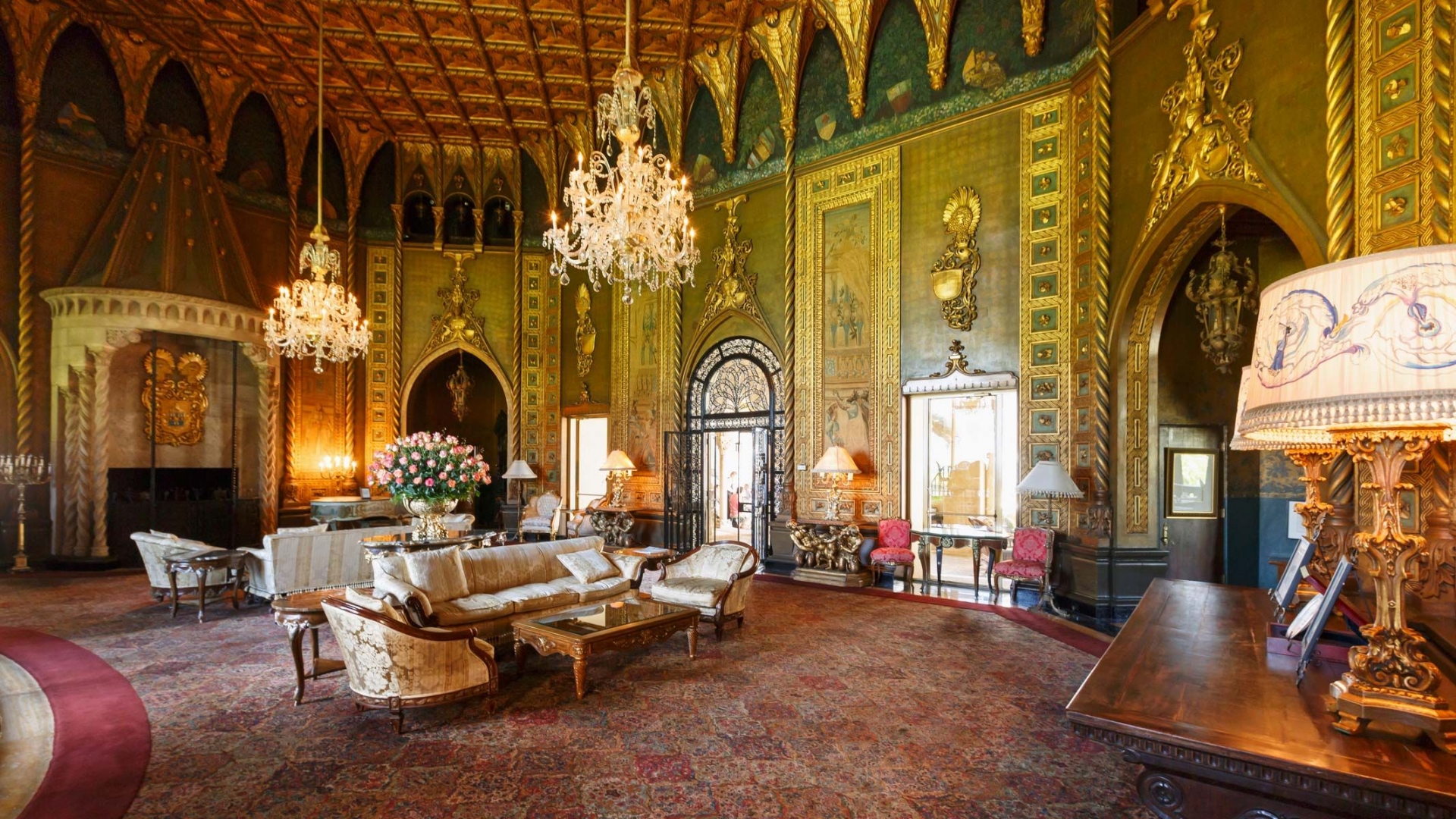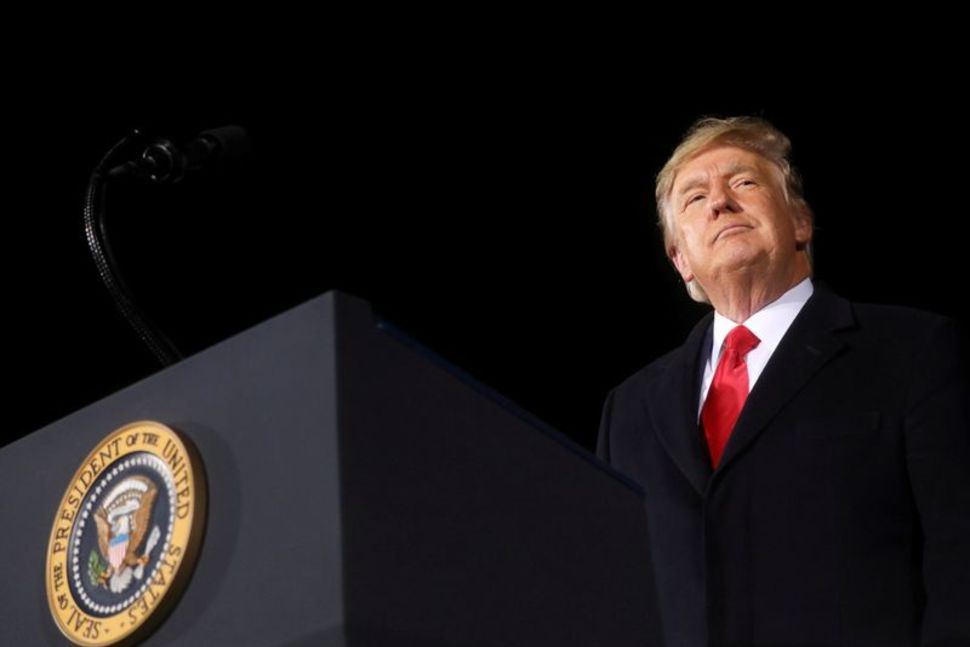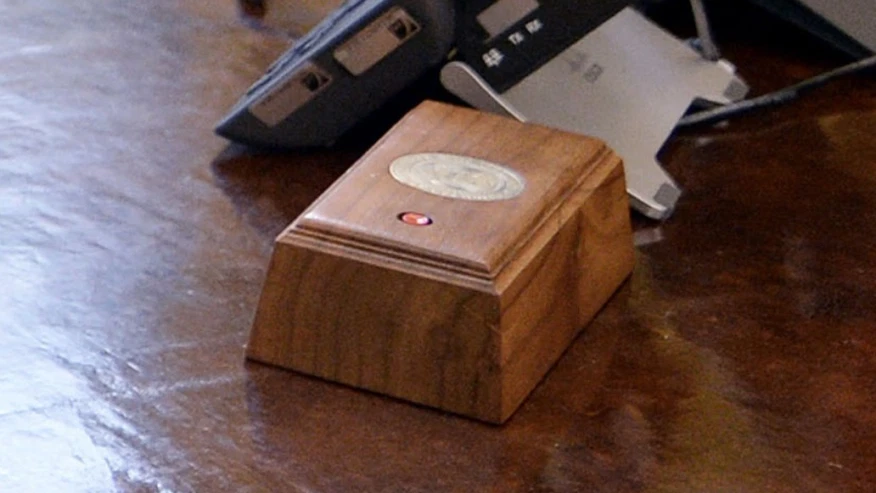Mind-blowing Facts about Mar-a –Lago - Donald Trump's Mansion
The history of Mar-a-Lago
 |
| Photo: Mar-a-Lago "Sea to Lake" in Florida (Photo: Palm Beach Daily News) |
The mansion dates to the 1920s, when Palm Beach’s wealthiest visitors were forsaking luxury hotels for their own digs, says Debi Murray, chief curator of the Historical Society of Palm Beach County. Post herself explored the site of her future home, on 17 acres of scrub between Lake Worth and the Atlantic. (Mar-a-Lago means “Sea to Lake” in Spanish.) Construction began in 1923 and kept some 600 workers busy, even though, as Murray notes, “Florida entered the Depression earlier than the rest of the country.” The mistress ensured that her workers wouldn’t go hungry.
Even by Palm Beach standards, Mar-a-Lago was grandiose: 58 bedrooms, 33 bathrooms with gold-plated fixtures (easier to clean, Post believed), an 1,800-square-foot living room with 42-foot ceilings. Its 110,000 square feet glinted with gold leaf, Spanish tiles, Italian marble and Venetian silks. All told, Post spent $7 million—somewhere north of $90 million today.
It was finished in 1927. That March, Post and her second husband, Edward F. Hutton, had a few score guests over for dinner before the annual Everglades Costume Ball. The hosts wore costumes evoking the reign of Louis XVI. But there was also noblesse oblige: In 1929, when she hired the Ringling Bros. and Barnum & Bailey Circus to perform for a charity fund-raiser, she invited underprivileged children to attend. In 1944, she offered her grounds to World War II veterans who needed occupational therapy. In 1957, she opened Mar-a-Lago to the International Red Cross Ball, and the gala event has been held there many times since—but not this year. It was one of more than 20 charity events that were relocated from Mar-a-Lago or canceled after the president’s remarks on violent protests in Charlottesville, Virginia, in August.
As the social seasons came and went, however, Palm Beach tastemakers’ tastes changed. The grand houses they built in the 1920s were seen as “white elephants,” Murray says, and were razed in the ’50s and ’60s, cites smithsonianmag.
How much does it worth?
Trump bought Mar-a-Lago very cheaply in 1985. He originally wanted it to be a trophy home, not a club. The sprawling mansion, currently the 18th-largest house in the US, was built by the cereal heiress Marjorie Merriweather Post in the 1920s, but has always been unfeasibly expensive to maintain. She tried donating it to the US government in her will, for use as a ‘winter White House’, but the parsimonious Jimmy Carter administration gave it back to her foundation.
Enter Trump in the 1980s, at the time building unglamorous but profitable tower blocks in Brooklyn and Staten Island, and keen to escape his father’s shadow. Already stung by a 1973 federal prosecution for breaching discrimination laws against his tenants, Trump was eager to strut onto the national stage. The 1980s saw him make a series of flamboyant acquisitions – a string of casinos, a yacht, an airline, New York’s landmark Plaza Hotel – and the completion of the first of his increasingly outlandish Trump Towers.
Mar-a-Lago was the icing on the cake – for decades, New York’s ‘old money’ had been wintering in mansions on Palm Beach island, off the Florida coast. Trump’s neighbour Laurence Leamer shows in his book on Mar-a-Lago that after several years of haggling, the Mar-a-Lago estate, which had been advertised for $90 million, was sold to Trump for under $9m. Only $300,000 of that was his own money – the rest was from a secret $8.5m loan from the Chase Manhattan Bank, although in public, he invariably boasted he paid cash upfront.
Unfortunately for the hopelessly overleveraged Trump, his 1980s acquisitions were unsustainable, and as he sank deep into debt in the early 1990s, several of his companies went bankrupt. The casinos, the yacht, the airline, the Plaza Hotel – all were sold off. Mar-a-Lago, a cripplingly expensive vanity purchase, looked set to go the same way.
An insight into 20-acre Donald Trump's Retreat
As Donald Trump leaves office, the place that has come to symbolise Brand Trump is Mar-a-Lago – his 20-acre, 128-room private members’ club in Palm Beach, Florida. With much of the Trump business empire heavily indebted and losing money, Mar-a-Lago is one of its few genuine cash cows.
According to the Government Accountability Office, the US taxpayer has paid $1m a day for each of the days Trump has spent at Mar-a-Lago. “How much US taxpayers’ money was spent on ‘non-security improvements’ to Mar-a-Lago and Trump’s Bedminster [another private members' club in New Jersey] residence?” the presidential historian Michael Beschloss recently asked, suggesting that the federal government could ask to be reimbursed, as it did with Richard Nixon’s California mansion after he left office, shows opendemocracy.
Mar-a-Lago is what first made Trump ‘respectable’ in high society, and it has subsidised his lifestyle since well before he reached the presidency. All the while, as a private member’s club with hundreds of members and guests milling around during Trump’s visits, it has been cloaked in secrecy. Trump now plans to move back there – but is the dream about to fall apart?
Trump’s Golden Egg
It is often said that the Trump Organization isn’t really a coherent business, rather a hotch-potch of different boutique interests that have little in common. And as Trump’s leaked tax returns showed, most of those businesses are in the red. Even his luxury Washington DC hotel, used by Nigel Farage to launch his new UK political party, and favoured by diplomats seeking to lobby the president, has lost at least $32m in four years, according to a recent investigation by Forbes. The same report showed that Trump had lost a further $70m on his Doral Miami golf course.
Against this stands Mar-a-Lago. Since it opened as a private members’ club in 1994, the building has been a rare golden egg for Trump. While the Trump Organization’s accounting is shrouded in secrecy, recent revelations have started to shed light on how Mar-a-Lago underpins Brand Trump. The New York Times analysis of his leaked tax returns noted that joining fees for the club yielded $6m in 2016 – up from $664,000 two years earlier – and that between 2015 and 2018, the president took $26m in payments from Mar-a-Lago.
Mar-a-Lago’s dual status as a business and as Trump’s residence also allows him to subsidise his lifestyle. The New York Times elaborated on how this can be done with his taxes:
Mr. Trump may be reporting business losses to the government, but he can still live a life of wealth and write it off … As a business, Mar-a-Lago is also the source of millions of dollars in expenses deducted from taxable income, among them $109,433 for linens and silver and $197,829 for landscaping in 2017. Also deducted as a business expense was the $210,000 paid to a Florida photographer over the years for shooting numerous events at the club, including a 2016 New Year’s Eve party hosted by Mr. Trump.
The opulent mansion is not only invaluable for writing off tax obligations, it is also a reliable source of income – especially at a time when others are drying up. Trump’s presidency has been good for Mar-a-Lago’s business. Since 2015, according to the New York Times, Trump is understood to have taken an additional $5m a year from Mar-a-Lago.
Some changes were made to upgrade this mansion
 |
| Inside Trump's mansion (Photo: Pinterest) |
In classic Trump style, various improvements were made including the addition of a 20,000 square foot ballroom the decorating of which involved $7 million worth of gold leaf and the installation of gold plated sinks. In 1989 portrait painter Ralph Wolfe Cowan painted a portrait of Trump that came to be titled 'The Visionary'. Cowan had known Post when she was the owner and so wanted to paint the new resident. Rather than paint Trump in one of his trademark suits, Cowan gave him a 'more Florida look', portraying him in tennis whites. Anthony Senecal, Trump's butler and unofficial historian, described to The New York Times how the library was 'panelled with centuries-old British oak and filled with rare first-edition books that no one in the family ever read'.
When in financial straits in the early 1990s, Trump announced plans to divide the historic home into several mini-mansions in order to make the estate lucrative. This proposition worked the Preservation Society of Palm Beach into a veritable fever and the plans were hastily blocked. Trump now had to think of another way that the house could earn its keep, and thus the Mar-a-Lago club was born, according to houseandgarden.co.uk.
Opening in April 1995 the club reportedly charges a $100,000 joining fee, plus $14,000 annually and a minimum $2000 spend on food - the joining fee reportedly doubled to $200,000 after Trump's presidential victory. Unlike other WASP-y Palm Beach clubs, Mar-a-Lago welcomed Jewish, African American and openly gay members - surprising given Trump's record of offending almost every minority group.
But all has not remained serene at Mar-a-Lago. In 2006 Trump sued Palm Beach Town for violating his right to free speech. The reason? Trump had installed an 80ft flagpole - 38ft taller than the maximum height permitted by the town council, which was incurring $250 a day fine. Trump sued for $25 million, but the lawsuit was settled on the condition that the pole be shortened to 70ft and Trump make a $100,000 donation to veterans' charities - an effective PR move to resolve the case. This was not the end of Trump's entanglement with the Palm Beach authorities. In 2015 he began a lawsuit against Palm Beach County for the 'deliberate and malicious' action of directing flights from Palm Beach International Airport right over Mar-a-Lago. The lawsuit has since been dropped.
| The Trump family maintain a strong connection to Mar-a-Lago, spending Thanksgiving, Christmas and New Year there. Eric Trump was also married there in 2014. However, when Trump was President, a new set of ethical dilemmas faced the U.S. government. Soon after he became President, White House Press Secretary Sean Spicer referred to Mar-a-Lago for the first time as 'the winter White House'. |






























